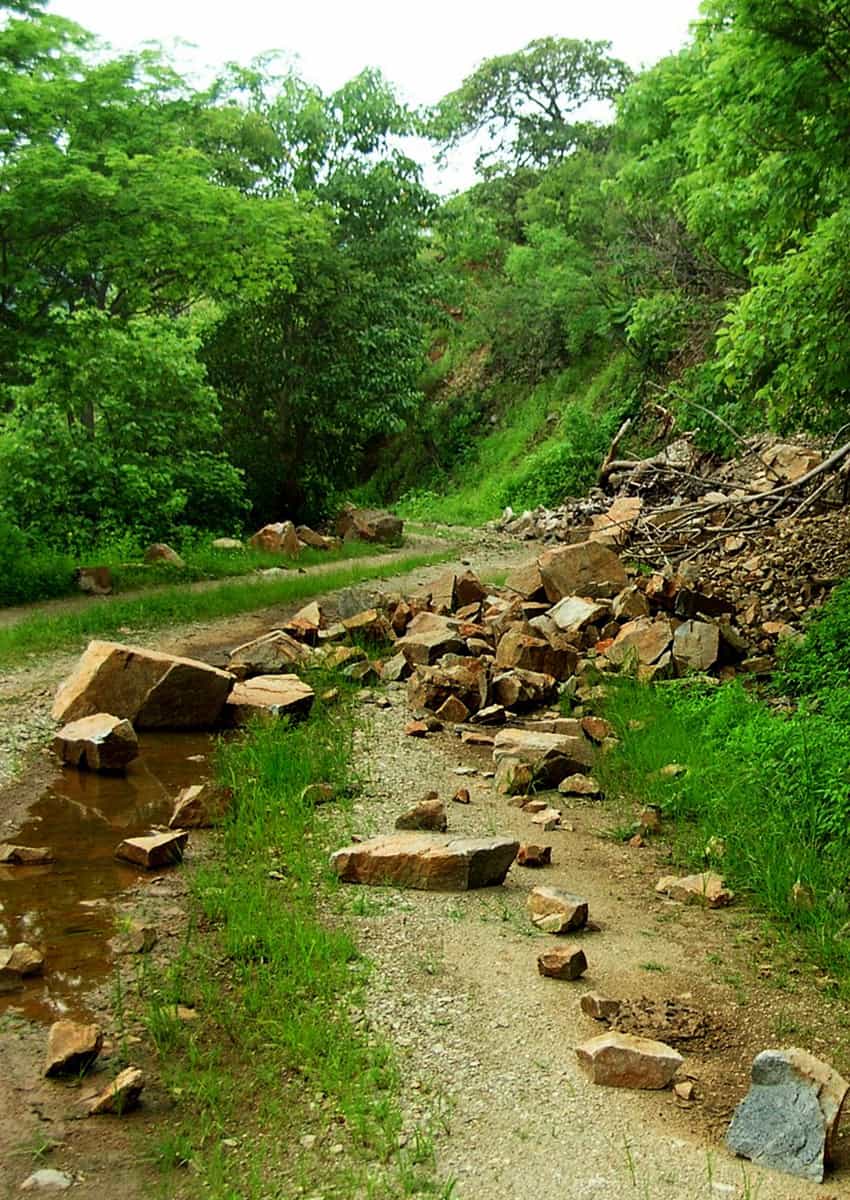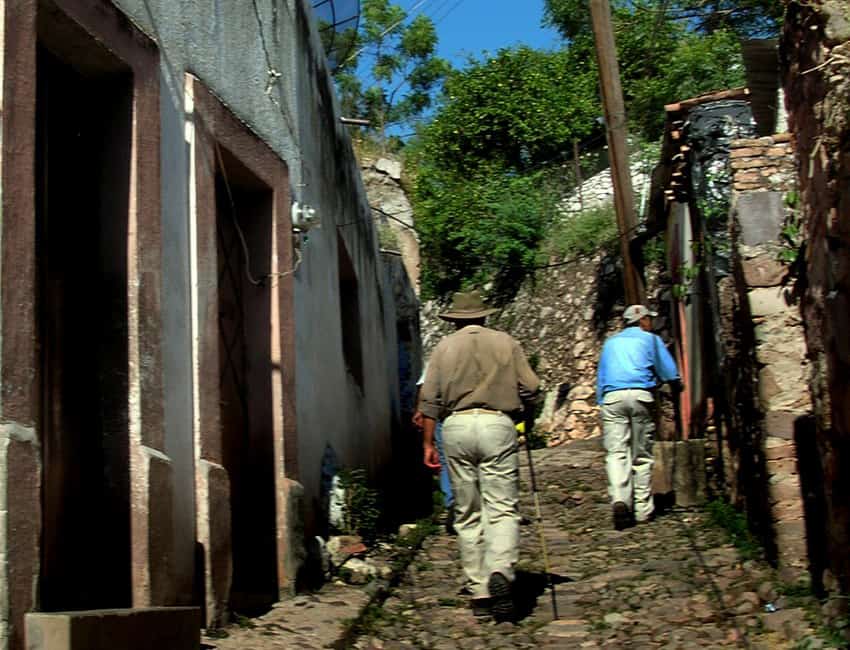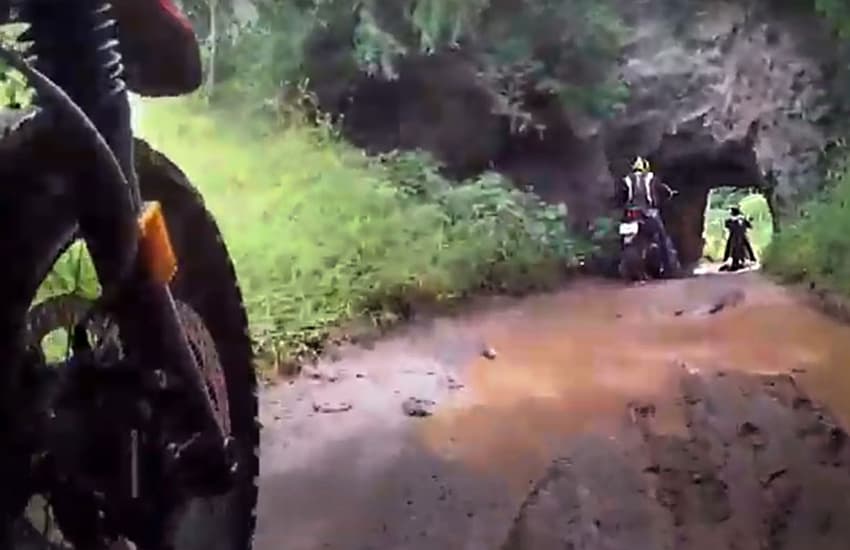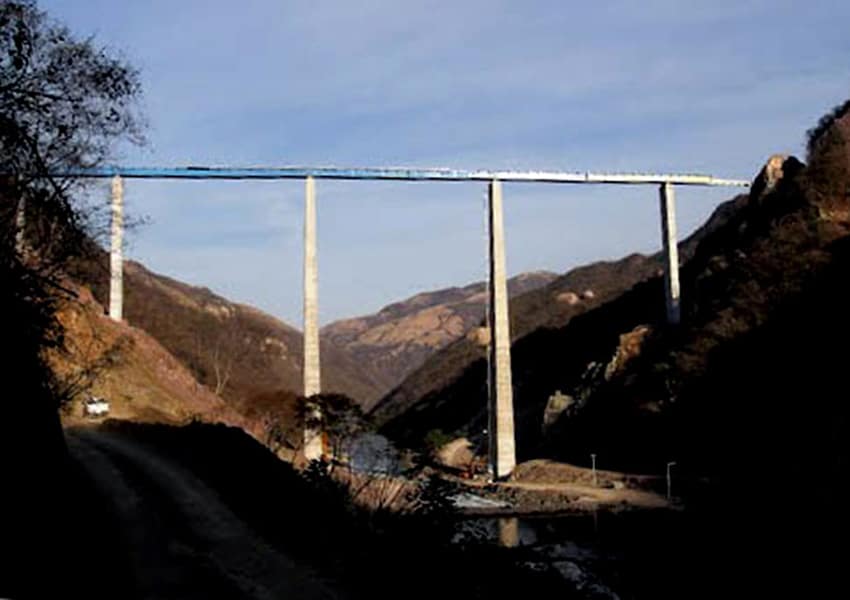The classic version of a camino de montaña, or mountain road, in Mexico inevitably features a 1,000-meter drop on one side and a sheer vertical wall on the other, all too often topped by delicately balanced rocks, each weighing tons and just daring you to pass beneath them.
The danger factor is then compounded a hundredfold if the road is only wide enough for one car to pass, and another hundredfold if the surface of that road is not asfalto (asphalt) or empedrado (cobblestone) but brecha (dirt) or — God help you — lodo (mud).
I was introduced to one of these unforgettable roads some years ago when a friend suggested we go visit a tiny, once incredibly prosperous mining town called San Pedro Analco in Jalisco.
As I had never heard of this place, I sought it out on a road map and found it right smack in the middle of Jalisco in what looked like the most desolate spot in the state. Its nearest neighbor was another isolated town with the nearly unpronounceable name of Hostotipaquillo.
“Why do you want to go to San Pedro Analco?” I asked my friend, who also happened to be named Pedro.

“Well, I visited it years ago by helicopter and before I left, I said to myself — using the words of General MacArthur — ‘I shall return,’” he said. “So, you see, I have to go back there.”
“Obviously,” I said, and soon Pedro was at my door with two other friends.
Off we drove to Hostotipaquillo, located 80 kilometers northwest of Guadalajara and famed for its gold mines. Here we asked a local man how to get to San Pedro Analco.
“Tienes doble tracción, verdad?” [You have four-wheel drive, right?”] he asked, eyeing Pedro’s Cherokee.
“No, amigo,” replied Pedro, “but this vehicle, in the hands of a skillful driver …”
“Then you will never make it to San Pedro,” interrupted our informant, who went on to describe the impossibly steep slope, the slippery dirt road, the frequent landslides, etc.

Of course, this lugubrious description of things only bolstered Pedro’s determination even more.
“Oh, la gente local always claim their brechas [dirt roads] are death traps,” commented Pedro. “Let’s go take a look.”
We drove out of Hostotipaquillo, skirted a charming little lake and suddenly found ourselves on the edge of a humongous canyon, deep and scary. At that moment, along came a truck.
“How far to San Pedro?” we asked.
“Oh, 20 minutos … but you’ll need doble tracción.”
We started down the narrow track, barely wide enough for one vehicle.

On our right was a drop so deep, it made all of us suck in our breath. On our left was the canyon wall, covered with huge rocks precariously perched above us.
Down we drove, and the pitch of the road grew steeper and steeper, the turns tighter and tighter, until suddenly, after we had descended for a full hour, we spotted the Santiago River far, far below us.
“Twenty minutes to San Pedro, my foot,” I exclaimed. “We’re not even halfway down the canyon, and then we have to go all the way back up the other side!”
Pedro said nothing. During the next few minutes, nobody else spoke a word as the road grew even steeper and the wheels began to slip a bit on the loose gravel. High above us, the sun disappeared behind a huge black cloud.
Silence weighed upon the car as we inched down the road, now shrouded in gloom. Miraculously, there happened to be a rare wide space just before the next turn. Pedro eased the Cherokee into it.
“Hmm, maybe we should take a look at what’s around the bend,” he suggested.

Well, one look told us that our nearly vertical road was about to get a whole lot steeper. But Pedro later admitted he had already decided to turn back.
“The moment I heard that dreadful silence, I knew all of you thought we were doomed,” he confided.
Back up at the top, we told a ranchero about our adventure.
“Gracias a Dios you turned around when you did,” he said. “You would never have gotten your car out of that barranca [ravine].”
Well, I thought I would never again have to peer over the edge of what I was now calling Jalisco’s scariest canyon but, alas, I hadn’t calculated on Pedro’s determination.
“Guess what, John! I just traded in my station wagon for the toughest 4WD on the market. Now we can finally go to San Pedro Analco. What are you doing tomorrow?”

I could have replied in the immortal words of old-time radio personality Chester Riley: “What a revoltin’ development this is!” But it was no use; adventure was calling and I had to go, even though I wondered whether I would ever come back.
The next day, we were joined by a friend, and off we drove to Hostotipaquillo.
Half an hour later, we were on the edge of that same tremendous barranca overlooking the Santiago River. The road was as narrow and twisting as ever, but having traction on all four wheels was comforting and very useful every time we met someone coming up the other way.
The Law of Mountain Roads said it was up to us, in the descending vehicle, to back up and find a place where the other car could pass. Believe me, such spots are few and far between on the royal road to San Pedro, but each time this happened, I reminded myself that I wasn’t expecting to survive this trip anyhow, so why worry?
Countless curves later, we bottomed the canyon and crossed the bridge, watching flocks of cormorants swooping over the frothing rapids.
Now we began climbing the canyon on the opposite side and, of course, immediately ran into somebody coming down the one-lane road. This time, he was obliged to do the backing up.

During this maneuver, we asked how far it was to San Pedro.
“Oh, it’s not too far,” said the driver, but you’ll never get that Jeep of yours through the eight tunnels.”
Eight tunnels? Nobody had mentioned any tunnels up until now, perhaps figuring we’d never get this far anyhow.
In no time, we reached the first tunnel and breezed right through it. The second was smaller and longer, and we squeezed through with only inches to spare.
In the third tunnel, those inches were reduced to millimeters and as a result, a few paint scrapings from Pedro’s brand-new Toyota now decorate the tunnel wall.
After just barely making it through, Pedro broached the subject of parking and continuing on foot.

“Walk?” I cried. “That could take all day since we don’t know where the town is — and besides, there’s no place here for you to turn around.”
Oh, so true. It looked like the bottomless abyss straight down from the edge of the so-called road, so we rolled on for another 600 meters and came face-to-face with tunnel four, through which the car would never pass.
Fortunately, not too far back, there was a “wide spot” which was wide only in the most relative manner of speaking. Here we abandoned Pedro’s car with its left wheels only five centimeters from the brink of eternity … and began our hike.
Well, four more tunnels and 20 minutes later, we walked into the plaza of San Pedro Analco, 43 stomach-wrenching kilometers from Hostotipaquillo.
A lot of silver and some gold were mined in this very old town starting in the 16th century and continued right up until 1984, when production shut down due to low silver prices. San Pedro has a church built in the 1800s and today a population of 290, of whom we encountered maybe five.
The cobblestone streets are narrow, the houses very old and the temperature quite warm (because of an elevation of only 880 meters).
Concluding our visit, we headed back to our vehicle, where we now faced the challenge of turning around on the so-called wide spot. I would have sworn it could not possibly be done, but in a mere 30 turns, each one involving a distance of maybe 10 centimeters, the Toyota was finally pointed toward the way home, and we again scraped through the remaining tunnels and carefully picked our way through the most recent landslides, all the while managing not to fall off the cliff-hanging road. We arrived back in Guadalajara at 8:30 p.m., delighted to still be numbered among the living.
So if you happen to be looking for adventure, here is a trip that will get your adrenaline going. Google Maps will guide you from Guadalajara to San Pedro Analco in just over two hours.
These days, the bridge I used to cross over the Santiago River is completely underwater thanks to the construction of the 209-meter-high Yesca Dam in 2012. In its place is a new bridge that rests upon pilings 120 meters tall.
When they built the new bridge, they said they were going to “upgrade” the road, but in September 2019, a group of motorcyclists made the long journey to San Pedro, naturally passing through all the tunnels without a scrape, demonstrating that the road has changed little over the years.
Their excellent video, Ruta Mortal, clearly shows that the route to San Pedro Analco is just as hair-raising as ever.
The writer has lived near Guadalajara, Jalisco, for 31 years and is the author of A Guide to West Mexico’s Guachimontones and Surrounding Area and co-author of Outdoors in Western Mexico. More of his writing can be found on his website.
